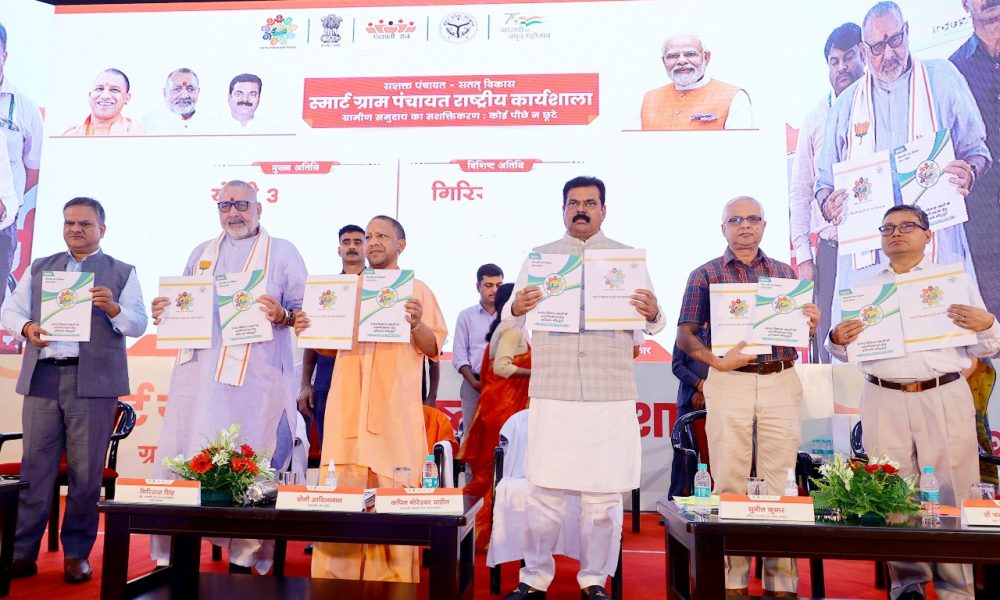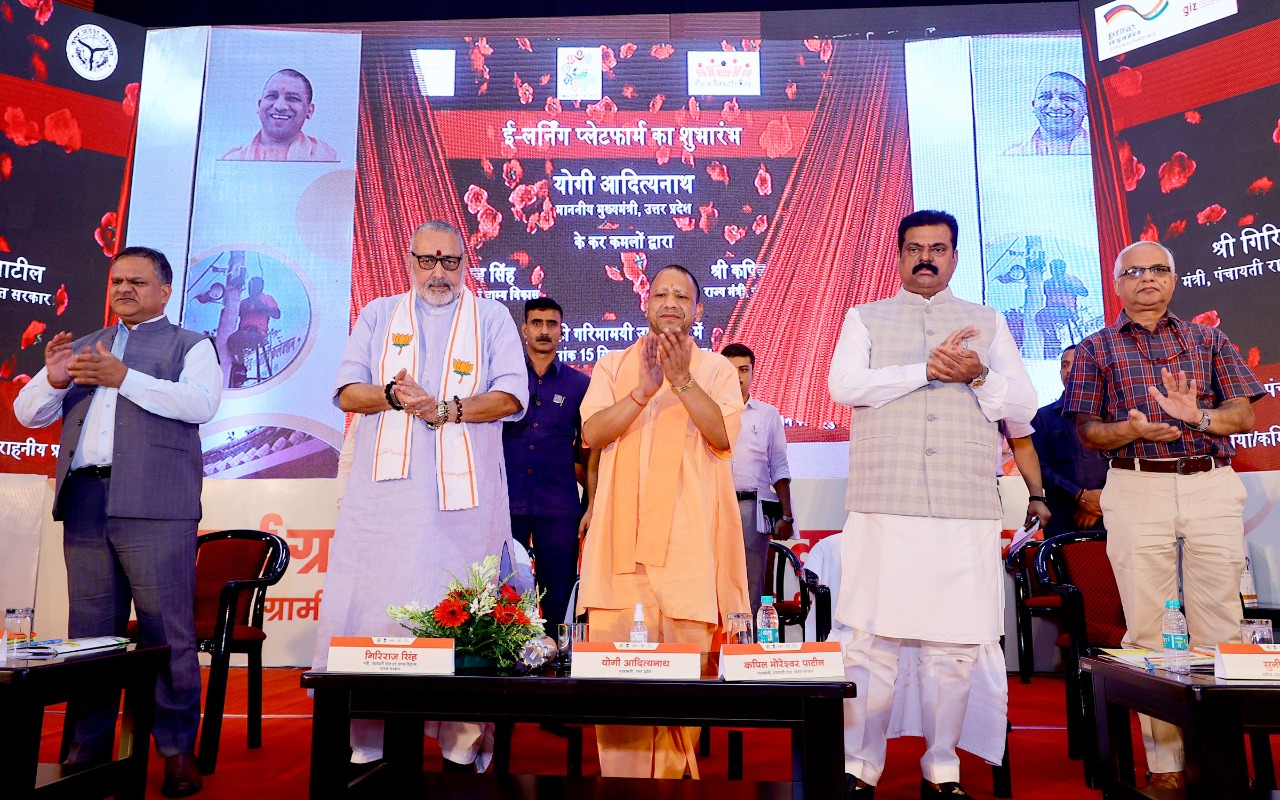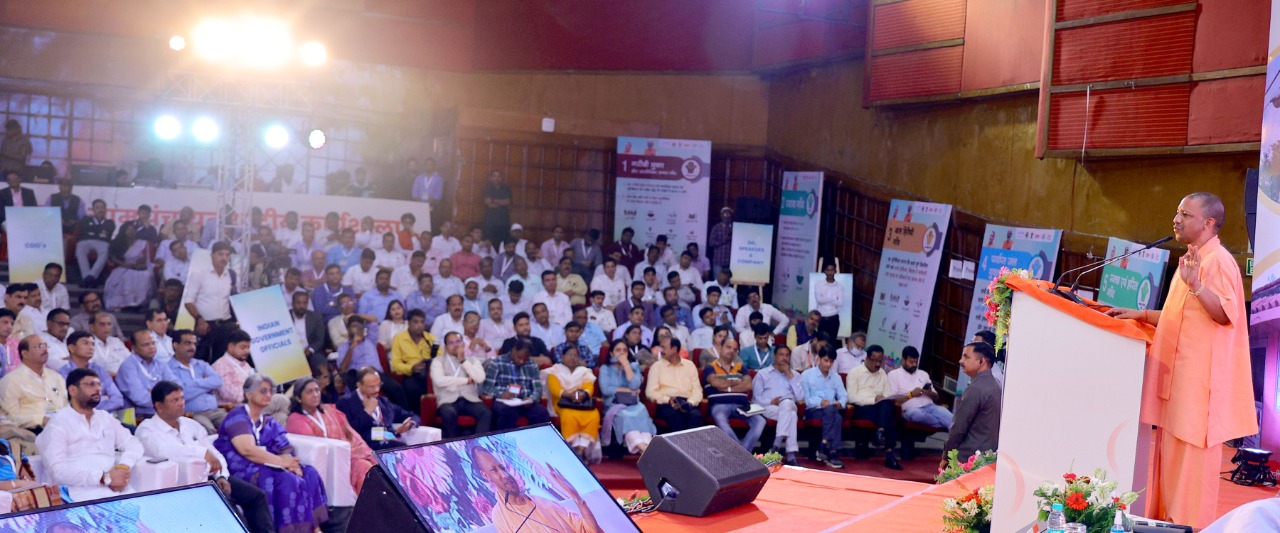
New Delhi: Uttar Pradesh Chief Minister Yogi Adityanath on Thursday said that the state must work for the holistic development of gram panchayats and make them self-sufficient in line with Prime Minister Narendra Modi’s goal to realises Mahatma Gandhi’s vision of ‘Gram Swaraj’.
“The soul of India resides in villages and they are the key to attaining “Bapu’s dream” of a self-reliant village. A smart village can be developed oonly if we have self-reliant villages. Numerous efforts have been made in this area by the Uttar Pradesh administration,” said the CM.
The CM was addressing a gathering on the occasion of the inauguration of a two-day conference on ‘Smart Village Panchayat: Empowering Rural Communities; Leaving No One Behind’ at Indira Gandhi Pratishthaan.
The Chief Minister further said that the state has the possibilities and the potential and needs only a little effort to achieve self-reliance of villages. There are about 2.5 lakh gram panchayats in India of which over 58,000 (23%) are in Uttar Pradesh. “These gram panchayats will play crucial role in achieving PM Modi’s goal to make India a $5 trillion economy and UP a $1 trillion economy”, he remarked, adding that use of technology and high-speed internet in rural parts of the state, can help achieve the goal faster and more smoothly.
Speaking on the state’s strategy for increasing GDP, he said, “If we have to raise GDP by 1%, the internet and Wifi facility in gram panchayats will have to be raised by 10%, to progressively boost the GDP by 1.3%.”
In the state of Uttar Pradesh, approximately 32–33% of rural areas have access to the internet and Wifi. He claimed that if it is raised to 80–85%, the GDP might rise by 8%.
The CM stated that there are approximately 4600 PHCs in the state while mentioning the most recent opening of a health ATM in Gorakhpur. “Before 2017, these centres lacked access to doctors. We connected these centres with AYUSH and provided doctors for them.”
“But for specific disorders, people opt for specialised medical professionals. We began the Arogya Melas in 2020, which are held every Sunday and feature a variety of expert doctors, including gynaecologists, physicians and skin specialists among others. Around 3 to 4 lakh people attend these Melas”, he remarked.
He said about 55 types of medical tests could be conducted in less than five minutes using these ATMs. These are all CSR managed. “In the initial phase, we are connecting the PHCs with Health ATMs. In the next phase, we will connect all Gram Panchayats with these”, CM pointed out.
CM said that village secretariats are being constructed in each gram panchayat today for effective implementation of various government schemes at grassroots level. Over 24,000-gram panchayats in the state have their own secretariats. Each panchayat now has an assistant. Additionally, BC Sakhis will be assigned to each gram panchayat in UP. Over 33,000 BC Sakhi have been posted up to this point, and they are all working admirably and making good money, he added.
Appreciating the work done by BC sakhis in gram panchayats, the CM said, “Transactions worth Rs 5500 crore have been made by them in a year and earned a net profit of Rs 14.50 crore. One BC Sakhi has earned a net profit of Rs 3 lakh in a year.”
The CM informed that LED lights are now installed in all panchayats while community toilets have been built. Open defecation is not practiced in any village.
The CM went on to say that for 40 years, encephalitis caused over 50,000 deaths in the state. “Today, I’m delighted to report that there have been no deaths from Joint Encephalitis/Acute Encephalitis”, he remarked.
This year, there have been a combined 40 cases of JE (Japanese Encephalitis) and AES (Acute Encephalitis Syndrome). The good news is that none of the seven patients died, he said.

The CM added that although there was fear of the disease among the populace, the state has succeeded in bringing the fatality rate to zero, thanks to the efforts of the double-engine government.
Yogi further said that under Azadi ka Amrit Mahotsav, the exercise of excavation/rejuvenation of ‘Amrit Sarovars’ (ponds) will encourage the villagers towards conservation of rain water, and raising the water level in the villages. These can be used as a source of income as fisheries can be practised by the villagers. Additional land can be used for commercial purposes.
Stressing on the need for public participation to ensure clean water in each area, the CM sought cooperation from village panchayat in the implementation of the Har Ghar Nal Yojana.
The Chief Minister said that in 2019, the women’s self-help group ‘Balinee Milk Producer Organisation’ of Jhansi earned Rs 14.50 crore as profit in 2021-22 through improved breed bovines. The land of gram panchayats can be used to make cow shelter sites, natural farming, biofuel, solar energy, etc.
Yogi’s four development mantras:
1. Development of infrastructure and amenities in schools: Drinking water, sanitation, separate toilets, smart classes, libraries, and sports grounds have been provided for boys and girls in Basic Education Council schools through Operation Kayakalp. There is a need to form the Old Student Council. The village secretariat is equipped with a computer, WiFi and Panchayat assistance. Now, the majority of the amenities are available in the villages. The government is expanding the infrastructure in every gram panchayat to support this.
 2. Bringing transparency in the methodology: Preparation of annuity action plan through public participation and GPDP, uploading on e-Swaraj portal of Government of India and making online payments to vendors through Public Financial Management System are being practiced to bring transparency.
2. Bringing transparency in the methodology: Preparation of annuity action plan through public participation and GPDP, uploading on e-Swaraj portal of Government of India and making online payments to vendors through Public Financial Management System are being practiced to bring transparency.
3. Decision to register Panchayat Sahayak as BLE has been taken for speedy disposal of public grievances and strengthening service delivery. Khasra-Khatauni, scholarship, pension, bill payment, birth-death certificate can be linked to this.
4. The Government is also planning to enhance online education, telemedicine, e-education, e-commerce in Gram Panchayats.




